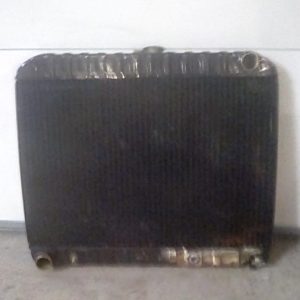Constructing a new automotive radiator core for a vintage car is a work of art.

In the beginning, these craftsmen were true pioneers. They had nothing to work with but trial and error. They experimented with materials such as copper and brass to determine how internal combustion engines operated to prevent overheating and dissipation of heat transfer.

Two types were used such as honeycomb tubular cores with various types of tubes and fin configurations. Many honeycomb style radiators were tried early on. Patterns consisting of hexagon, square, diamond, etc. created a practically an endless array.

Honeycombs were either cartridge or film type construction. Cartridge cores are individual tubes cut to the depth necessary, then swedging the ends, placing them into a jib packed tightly and face dipped into ⅜” lead bath front and back. Cores were run off machines in lengths then placed in a jig and also face dipped. Once the core is constructed the upper and lower tank sections are soldered to complete the radiator.
